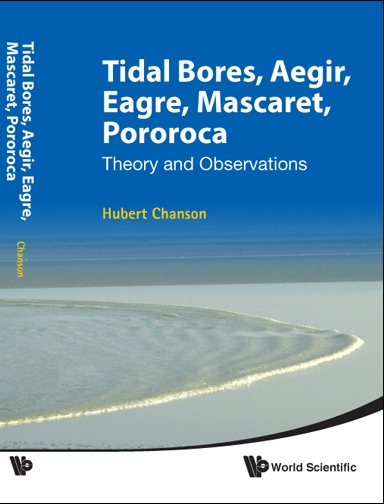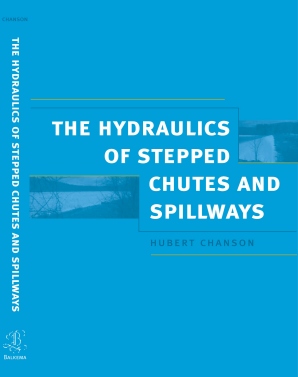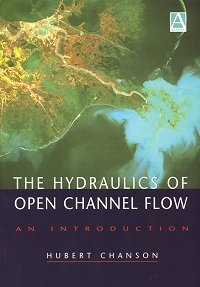 ERRATA & UPDATES
ERRATA & UPDATES
CHANSON, H. (1999). "The
Hydraulics of Open Channel
Flow : An Introduction." Butterworth-Heinemann,
Oxford, UK, 512 pages
CHANSON, H. (1999). "The Hydraulics of Open
Channel Flow : An Introduction." Edward Arnold, London, UK
[ISBN 0 340 74067 1]
"Without a doubt, this is the best
introduction to the hydraulics of open channel flow that I have yet
to
read."
Professor S.N. LANE, University of Leeds in Environmental
Conservation, 2001 {Read Full Review}
"This is an excellent book for undergraduate and
graduate students in civil engineering interested in open channel
flow,
and a very useful resource text for those interested in hydraulics
outside engineering field."
Professor P. BATES, University of Bristol in Hydrological Processes,
2000 {Read Full Review}
"This book
can be strongly recommended to students and engineers",
Professor
JOVANOVIC, University of Belgrade in Urban Water, 1999 {Read Ful Review}
Spanish Edition published by McGraw Hill Interamericana {http://www.mcgraw-hill.com.mx/}
Chinese Edition published by Hydrology Bureau of Yellow River
Conservancy Committee, March 2003 (ISBN 7-80621-529-8).
Order form : http://www.uq.edu.au/~e2hchans/reprints/leafchin.pdf
(Chinese edition)
Support website : {http://www.bh.com/companions/0340740671}
Download chapter samples : Chap.
10: Sediment Transport Mechanisms 1. Bed-load Transport (PDF
file at UQeSpace) & Chap.
14: Physical Modelling of Hydraulics (PDF
file at
UQeSpace)
Newletter : {http://www.uq.edu.au/~e2hchans/reprints/news_01.pdf}
{http://www.uq.edu.au/~e2hchans/reprints/news_02.pdf}
Book reviews : {http://www.uq.edu.au/~e2hchans/reprints/icheme20.pdf}
{http://www.uq.edu.au/~e2hchans/reprints/urbwat.pdf}
{http://www.uq.edu.au/~e2hchans/reprints/envcons.pdf}
{http://www.uq.edu.au/~e2hchans/reprints/hydproc01.pdf}
{http://www.uq.edu.au/~e2hchans/reprints/jhr_201.pdf}
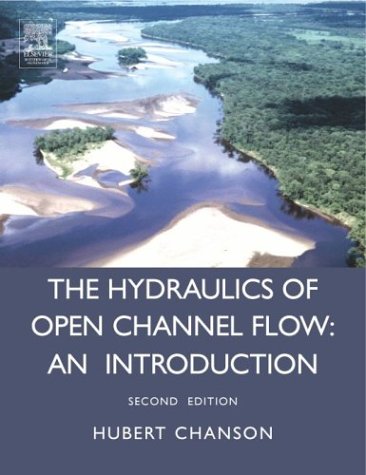
ORDER FORM :
http://www.uq.edu.au/~e2hchans/reprints/bh_order.pdf
(English edition)
http://www.uq.edu.au/~e2hchans/reprints/leafchin.doc
(Chinese edition)
SECOND EDITION : CHANSON,
H.
(2004). "The Hydraulics of Open Channel
Flow : An Introduction." Butterworth-Heinemann,
Oxford, UK, 2nd edition (ISBN 0 7506 5978 5).
CORRECTIONS /ERRATA
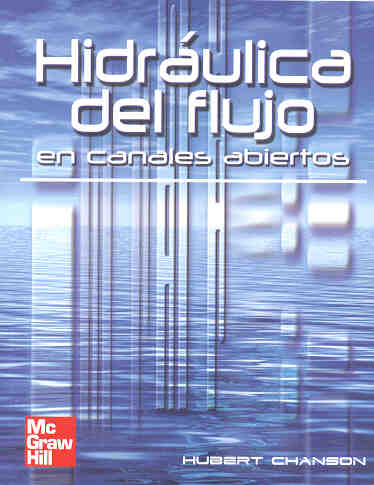 Page xxiv
Page xxiv
GAUCKLER : Philippe Gaspard GAUCKLER
(1826-1905) was a French engineer and member of the French 'Corps des
Ponts-et-Chaussées'. He re-analysed the experimental data of
DARCY and BAZIN (1865), and
in 1867 he presented a flow resistance formula for open channel flows
(Gauckler-Manning formula) sometimes called improperly the Manning
equation
(GAUCKLER 1867). His son was Directeur des Antiquités et des
Beaux-Arts (Director of Anquities and Fine Arts) for the French
Republic
in Tunisia and he directed an extensive survey of Roman hydraulic works
in Tunisia.
Page 25
Equation (3-9a): The last term on the right
handside of the equation should be : Patm/(r*g)
.
Page 66
Solution of the application: The first
equation should be : q = V1 d1 = V3 d3
.
Page 67
In Table 4.1, the Petitcodiac river is
located in Canada (Bay of Fundy).
Page 70
Application, solution: In the table of
iterative results, the first estimate of d2 should be : d2
= dc = 6.34 m .
For Vsrg = 0, the positive surge
is a steady hydraulic jump. With an upstream Froude number close to
unity (Fr1 = 1.43), the downstream flow depth is slightly
greater than the critical depth.
Page 88
Application No. 1: In the table of results,
column 3, the correct values of the Darcy friction factors are : f =
0.016, 0.0134, 0.0131, 0.0131.
Page 235
Equation (12.8) should be :
to = 1/2 r
V2 h2/(l
d)
(12.8)
There should be 1/2 times the density times
the velocity square …
Pages 241, 243 & 244
Equation (12.8) should be corrected to:
to = 1/2 r
V2 h2/(l
d)
(12.8)
The solution in page 244 should be :
Complete
calculations give : V = 0.9 m/s, to'=
1.95 Pa, to" = 0.70 Pa, h = 0.15 m, l =
9.9 m.
Page 279
Table 14.1, Column 4 : The scaling ratio of
the discharge per unit width for a Froude law (distorted model) should
be Zr3/2 .

Page 322
Equation (17.4) should be :
 (17-4)
(17-4)
It should be the square-root of 2 times g,
where g is the gravity acceleration.
Pages 378-379
Figure 19.5 Hydraulic calculations of
upstream head above invert bed for box culverts with Inlet
Control (Concrete Pipe Association of Australia 1991) (DOUBLE-CLICK
for full size
.WMF file)
http://www.uq.edu.au/~e2hchans/pictures/cpaa91_1.gif
or http://www.uq.edu.au/~e2hchans/pictures/cpaa91_1.wmf
Figure 19.6 Hydraulic calculations of total head
losses for concrete box culverts flowing full (i.e. drowned)
(Concrete Pipe Association of Australia 1991) (DOUBLE-CLICK
for full size .TIF
file)
http://www.uq.edu.au/~e2hchans/pictures/cpaa91_b.gif
or http://www.uq.edu.au/~e2hchans/pictures/cpaa91_b.tif
(Notes : (1) the old Figure 19.5 was for Inlet
control calculations of circular pipes; (2) the old Figure 19.6
was for Inlet control calculations of box culverts; (3) double-click
on the pictures below to download the .GIF files)
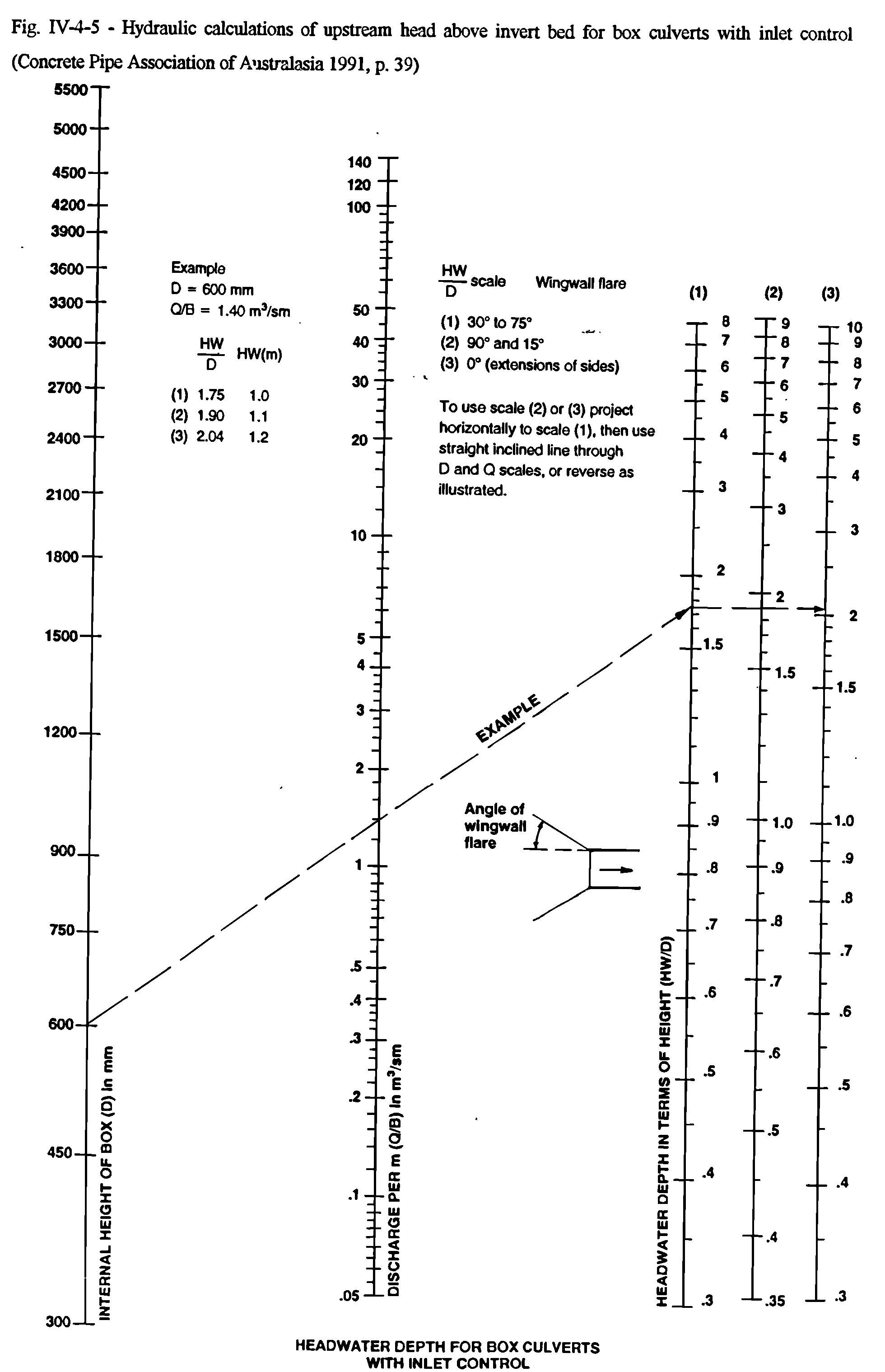
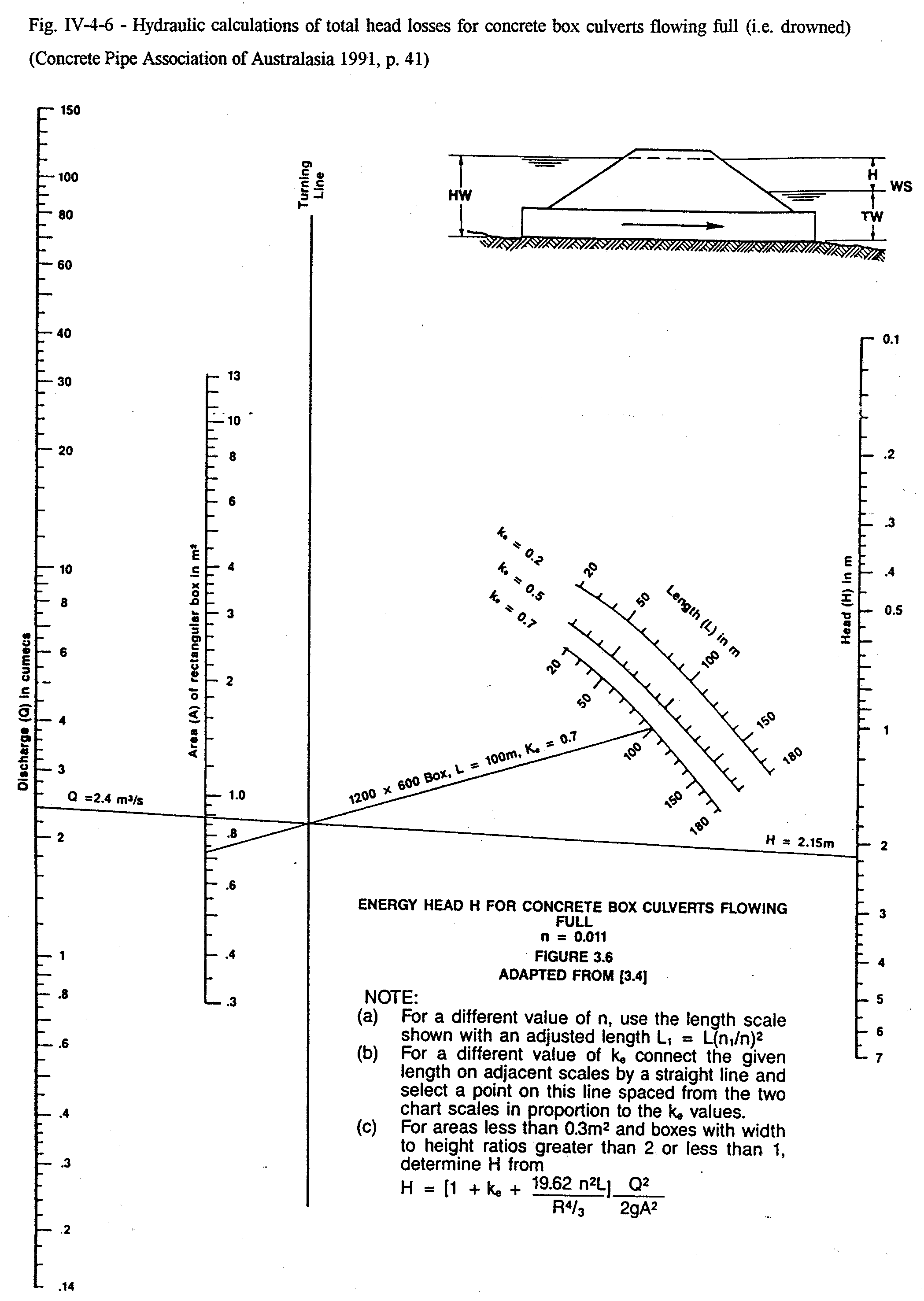
UPDATES
Page 294
Table 15.1: A further axample of
computational models for open channel flows is HydroChan,
a 1-D model for steady flow down flat slope (assuming hydrostatic
pressure
distribution and prismartic cross-section). Flow resistance may be
computed
using the Darcy friction factor (fully-rough-turbulent flow or based
upon
the Keulegan formula) and Gauckler-Manning formula.
Pages 311-312
A discussion of the teaching of hydraulic
design may be found in :
CHANSON, H. (2001). "Teaching Hydraulic Design in an
Australian Undergraduate Civil Engineering Curriculum." Jl of Hyd.
Engrg., ASCE, Vol. 127, No. 12, pp. 1002-1008 (ISSN
0733-9429). (Download PDF
File)
Pages 313-316
Further information on Minimum Energy Loss
weirs may be found at :
The
Minimum Energy Loss (MEL) weir design : An
overflow earthfill embankment dam
{http://www.uq.edu.au/~e2hchans/mel_weir.html}
Page 332
On Page 332, Figure 17.11 must be updated
based upon new results (CHANSON et al. 2000). In skimming flows down a
stepped chute, the re-analysis of over 650 prototype and laboratory
data suggests that the equivalent friction factor is about 0.2. The
result is consistent with an analytical model of the the cavity flow (CHANSON et al. 2000, CHANSON
and
TOOMBES 2001).

References :
CHANSON, H., YASUDA,Y., and OHTSU, I.(2000). "Flow
Resistance in Skimming Flow : a Critical Review."
Intl Workshop on Hydraulics of Stepped
Spillways, Zürich, Switzerland, H.E. MINOR & W.H. HAGER
Editors, Balkema Publ., pp. 95-102.
CHANSON, H. (2000). "Forum
article. Hydraulics of Stepped Spillways: Current Status", Jl of
Hyd. Engrg., ASCE, Vol. 126, No. 9, pp. 636-637 (ISSN 0733-9429).
Page 337
A relevant discussion on hydraulic jumps at
an abrupt drop includes :
MOSSA, M., PETRILLO, A., and CHANSON, H. (2002).
"Tailwater Level Effects on Flow Conditions at an Abrupt Drop." Jl
of Hyd. Res., IAHR, Vol. 40, No. 4 (ISSN 0733-9429). (Download
PDF Preprint File)
Page 410-417
On Page 332, Figure 17.11 must be updated
based upon new results (CHANSON et al. 2000). In skimming flows down a
stepped chute, the re-analysis of over 650 prototype and laboratory
data suggests that the equivalent friction factor is about 0.2. The
result is consistent with an analytical model of the the cavity flow (CHANSON et
al. 2000, CHANSON
and
TOOMBES 2001). New Figure A4.5 : Click
HERE.
Page 387-390
Further illustrations of Minimum Energy
Loss
culverts in operation may be found at :
Hydraulics
of
Minimum Energy Loss (MEL) culverts and bridge waterways
{http://www.uq.edu.au/~e2hchans/mel_culv.html}
A discussion on the MEL culvert design is developed
in :
CHANSON, H. (2000), "Introducing
Originality
and Innovation in Engineering Teaching: the Hydraulic
Design
of Culverts." European Journal of Engineering Education,
Vol.
25, No. 4, pp. 377-391.
INTERNET RESOURCES
Hydraulic engineering resources
Photographs
of
rivers, coasts, hydraulic structures, ...
{http://www.uq.edu.au/~e2hchans/photo.html}
Technical
resources in hydraulic resources
{http://www.uq.edu.au/~e2hchans/url_menu.html}
Reprints in
hydraulic engineering
{http://www.uq.edu.au/~e2hchans/reprints.html}
Chicago Calumet
waterway plant {http://www.mwrdgc.dst.il.us/plants/sepa.htm}
Petit-saut dam (French Guyana): aeration
cascade
Petit-Saut
dam : photographs,
dam
details
Weirs
and
small dams on the Kent river (UK)
Rivers Seen from
Space
Inlets on-line
(USACE)
Estuaries in South Africa
Great Barrier Reef, National Geographic {http://www.nationalgeographic.com/ngm/0101/feature2/index.html}
Oceanic turbulence around Japanese islands {http://nisidriv.cv.noda.sut.ac.jp/www/eddy.htm}
The Aral sea
Photographs {http://www.uq.edu.au/~e2hchans/photo.html#Flood
plains}
NASA Earth Observatory (1)(2)
TETHYS (Kazakhstan) and JRAK (Japan)
Ecological expedition {http://www.kz/gallery/aral/tpict1.html}
Trip in Uzbekistan {http://www.fantasia.net/errol/}
General resources
NASA Earth
observatory {http://earthobservatory.nasa.gov/}
NASA rain, wind and
air-sea gas exchange research
{http://bliven2.wff.nasa.gov/index.htm}
National Weather Service Office
of Hydrology
El Niño Information in
California
Structurae,
International Database and Gallery of Structures
Gallery
of photographs in fluid dynamics by Mark Kramer
Qanats
:
an historical account
Organisations/Institutions
ASME
Database (American Society of Mechanical Engineers)
ICEnet: The Institution of
Civil Engineers, UK Homepage
Japan Society
of Civil Engineers
ASCE - American Society of Civil
Engineers Homepage
ASME - American Society of Mechanical
Engineers
ENPC - Ponts et Chaussees
IAHR homepage (International
Association for Hydraulic Research)
US Geological Survey
About Professor Hubert CHANSON
Hubert CHANSON
is a Professor in Civil Engineering,
Hydraulic Engineering and Applied Fluid Mechanics, at
the University of Queeensland,
Australia. His research interests include design of hydraulic
structures, experimental investigations of two-phase flows, coastal
hydrodynamics, water quality modelling, environmental management and
natural resources. He has been an active consultant for both
governmental agencies and private organisations. His publication record
includes over 550 international refereed papers and his work was cited
over 2,700 times since 1990. Hubert Chanson is the
author
of several books : "Hydraulic
Design
of
Stepped Cascades, Channels, Weirs and Spillways" (Pergamon,
1995), "Air Bubble Entrainment in Free-Surface
Turbulent Shear Flows" (Academic
Press, 1997), "The Hydraulics of
Open Channel Flow : An Introduction" (Butterworth-Heinemann,
1st
edition 1999, 2nd editon 2004),
"The Hydraulics of Stepped Chutes and
Spillways" (Balkema, 2001), "Environmental Hydraulics of
Open Channel
Flows" (Butterworth-Heinemann,
2004), "Applied
Hydrodynamics:
an Introduction of Ideal and Real Fluid Flows" (CRC
Press, 2009),
and "Tidal
Bores,
Aegir, Eagre, Mascaret, Pororoca: Theory And Observations" (World
Scientific, 2011). He
co-authored two further books "Fluid
Mechanics
for Ecologists" (IPC Press,
2002) and "Fluid Mechanics for Ecologists. Student Edition" (IPC,
2006). His textbook "The
Hydraulics of Open Channel Flows : An
Introduction" has already been translated into Spanish (McGraw-Hill
Interamericana)
and Chinese (Hydrology Bureau of Yellow River Conservancy
Committee), and the second
edition was published in 2004. In 2003, the IAHR
presented him with the 13th Arthur Ippen
Award for outstanding
achievements in hydraulic engineering. The American Society of Civil
Engineers, Environmental and Water Resources Institute (ASCE-EWRI)
presented him with the 2004 award for the Best Practice paper in the
Journal of Irrigation and Drainage Engineering ("Energy
Dissipation
and Air Entrainment in
Stepped Storm Waterway" by Chanson and Toombes 2002). Hubert
Chanson edited further several books : "Fluvial,
Environmental and
Coastal Developments in Hydraulic
Engineering" (Mossa, Yasuda & Chanson 2004, Balkema),
"Hydraulics.
The
Next
Wave" (Chanson & Macintosh 2004, Engineers
Australia), "Hydraulic
Structures:
a
Challenge to Engineers and Researchers" (Matos & Chanson 2006, The University of Queensland), "Experiences
and
Challenges in Sewers:
Measurements and Hydrodynamics" (Larrate & Chanson 2008,
The University of Queensland),
"Hydraulic
Structures:
Useful
Water Harvesting Systems or Relics?" (Janssen & Chanson 2010,
The University of Queensland),
"Balance
and
Uncertainty: Water in a Changing World" (Valentine et al. 2011, Engineers Australia).
He chaired the Organisation of the 34th
IAHR World Congress held in Brisbane, Australia between 26
June and 1 July 2011.
His Internet home page is http://www.uq.edu.au/~e2hchans.
He also developed a gallery of photographs website {http://www.uq.edu.au/~e2hchans/photo.html}
that received more than 2,000 hits per month since inception.
This page was visited : xxxx
times since 01-12-2000.
 ERRATA & UPDATES
ERRATA & UPDATES 





